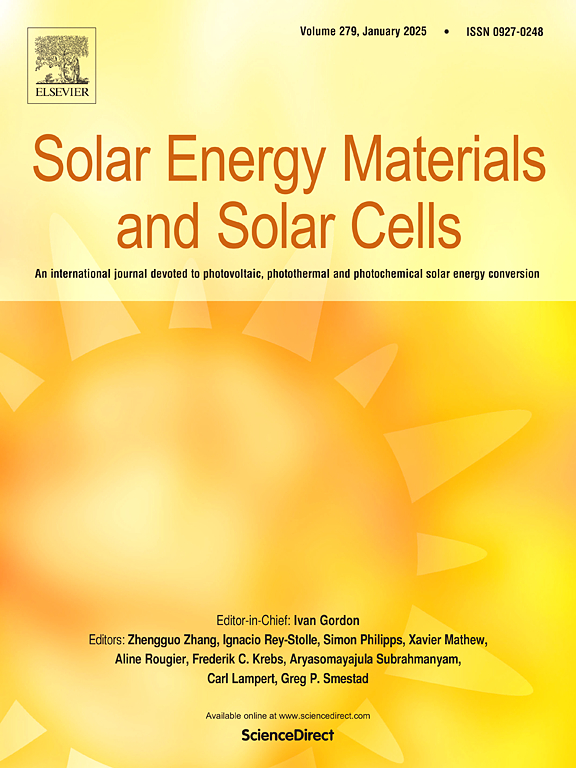Annealing-free fluoropolymer protective layer for mitigating snail trails in crystalline silicon photovoltaic modules
IF 6.3
2区 材料科学
Q2 ENERGY & FUELS
引用次数: 0
Abstract
Snail trail faults, caused by the reaction between the silver electrodes of crystalline silicon (c-Si) photovoltaic (PV) cells and various chemicals, lead to electrode disconnection, performance degradation, and localized heating. This study aimed to develop stable c-Si PV modules by applying two different room-temperature processed protective layers: cyclic transparent optical polymer (CYTOP) and perhydropolysilazane (PHPS). Both coatings are designed to prevent acid-induced reactions at the cell's electrodes. After 3 min of direct exposure to nitric acid, c-Si PV cells with protective coatings retained 75 % of their electrode height and performance, while 66 % of electrodes without protective layers were corroded. As a result, the series resistance of uncoated c-Si PV cells increased more than tenfold, whereas cells with PHPS and CYTOP coatings exhibited only a twofold increase. A 1000-h damp heat test of the encapsulated c-Si PV cells revealed that CYTOP effectively suppressed electrode degradation and preserved its shape, outperforming encapsulated uncoated cells. While the PHPS film demonstrated excellent protective properties at the cell level, its performance at the module level was hindered by poor adhesion between the encapsulant and the cell, leading to delamination. Therefore, a thin layer of CYTOP shows strong potential for protecting c-Si PV modules from acid-related degradation during operation. This work offers valuable insights for designing more reliable PV modules.
求助全文
约1分钟内获得全文
求助全文
来源期刊

Solar Energy Materials and Solar Cells
工程技术-材料科学:综合
CiteScore
12.60
自引率
11.60%
发文量
513
审稿时长
47 days
期刊介绍:
Solar Energy Materials & Solar Cells is intended as a vehicle for the dissemination of research results on materials science and technology related to photovoltaic, photothermal and photoelectrochemical solar energy conversion. Materials science is taken in the broadest possible sense and encompasses physics, chemistry, optics, materials fabrication and analysis for all types of materials.
 求助内容:
求助内容: 应助结果提醒方式:
应助结果提醒方式:


